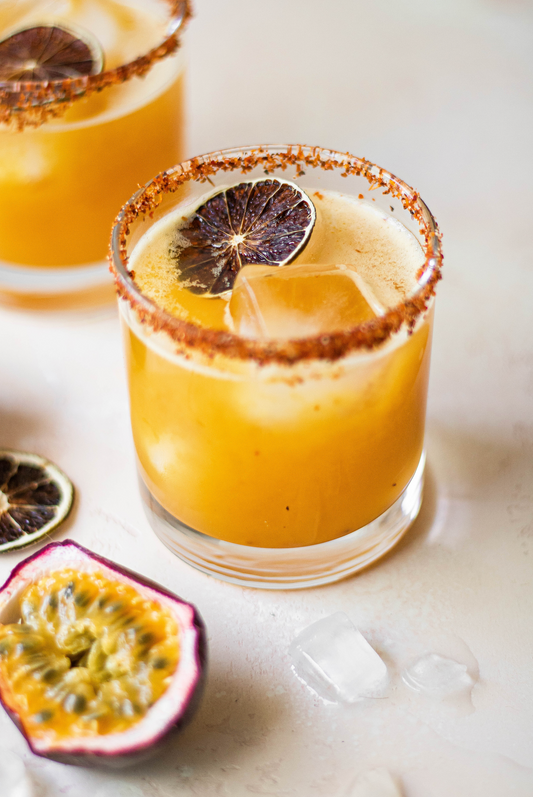Here at Twisted Alchemy, we are pretty obsessed with the juicy, tropical flavors of rum cocktails. We feel pretty confident that anyone who’s tried a Pina Colada with Twisted Alchemy’s 100% Pineapple Cold Pressed Juice will agree. But where does the elevated flavor of rum come from? Read on to dive into the fascinating history of this beloved spirit.
Rum, a distilled alcoholic beverage made from sugarcane byproducts such as molasses or sugarcane juice, boasts a fascinating history that spans centuries and continents. This spirit has evolved from a crude and potent concoction to a refined and globally celebrated drink, influencing trade, culture, and even politics along the way.
The story of rum begins in the sugarcane fields of Southeast Asia and the Indian subcontinent, where sugarcane was first cultivated around 3500 BC. Ancient civilizations were among the first to extract sugarcane juice and ferment it into alcohol. This rudimentary drink was a far cry from the sophisticated rums we know today, but it laid the foundation for future developments.
Rum's transformation into a more palatable and potent drink occurred in the Caribbean, where European colonial powers began cultivating sugarcane in the late 15th century. The sugarcane industry rapidly expanded across the islands, leading to the production of molasses as a byproduct of sugar processing.
The true turning point for rum came when distillation techniques were introduced to the Caribbean in the early 17th century. European colonists, particularly the English, Dutch, and French, began distilling molasses to create a spirit that was initially known as "kill-devil" due to its fiery nature. Over time, this drink improved in quality and earned the name "rum."
Rum gained legendary status among seafarers, including pirates and privateers, during the Age of Sail. The spirit's high alcohol content made it a preferred choice for preserving water on long voyages, and it also served as a form of payment for sailors. The Royal Navy, in particular, began issuing daily rum rations to its sailors in the 18th century, a practice known as the "rum ration" or "tot."
Rum's association with naval tradition continued until 1970 when the British Royal Navy officially ended the daily rum ration, marking the end of an era. The tradition lives on in certain ceremonial occasions, but the daily rum ration is no more.
In the 20th century, rum enjoyed a revival in popularity, thanks in part to the rise of Tiki culture. Tiki bars, inspired by Polynesian themes and flavors, became all the rage in the United States during the mid-20th century. Iconic cocktails like the Mai Tai and Zombie fused the elevating power of rum with the tart flavor of lime, tropical inspired liqueurs, and inventive new techniques. The most premiere bars today use Twisted Alchemy’s 100% Persian Lime Cold Pressed Juice to bring superior quality to these classics.
Today, rum is experiencing a resurgence in popularity, with craft distilleries producing high-quality rums that cater to diverse tastes. From light and crisp white rums to rich and complex aged varieties, the rum market offers a wide spectrum of flavors and profiles. Rum cocktails continue to evolve as well, with mixologists crafting innovative drinks that highlight the spirit's versatility. From innovative recipes like our Twisted Extra Dirty Chai or classics like the Yellow Hammer, Twisted Alchemy’s juices and syrups bring a cultivated flavor.
The history of rum is a complex tapestry woven with threads of exploration, trade, exploitation, and culture. From its humble beginnings in ancient sugarcane fields to its place in contemporary cocktail culture, rum has left an indelible mark on the world, offering a spirited journey through time and taste. As we raise our glasses to celebrate National Rum Day, we toast to the enduring legacy of this remarkable spirit.
Try these recipes
- Choosing a selection results in a full page refresh.





